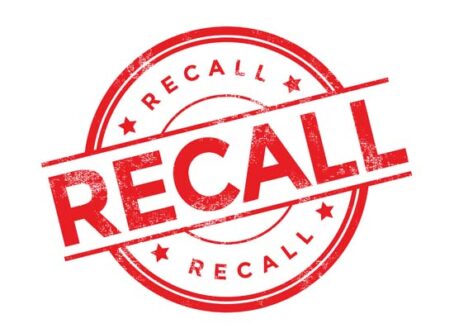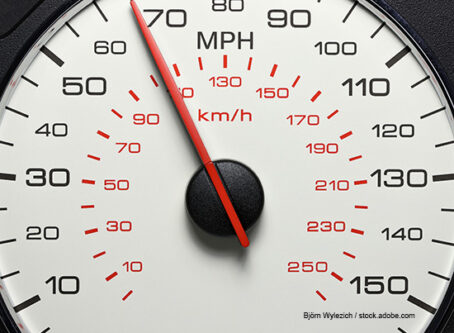What carriers need to know about Connecticut’s highway use fee
At the start of 2023, a highway use fee went into effect for carriers traveling through Connecticut. The fee applies to all commercial vehicles that carry a classification of Class 8 through Class 13.
As with any new process, there have been some growing pains as drivers work to familiarize themselves with the new fee. The following is intended to help carriers navigate the registration and payment process for the highway use fee.
Getting started
The first step that all carriers will need to complete in order to comply with the new fee is to register with the state’s Department of Revenue Services. To register, simply complete and submit an application to DRS. It should be noted the application is available only in electronic form on myconneCT, the department’s online filing and paying portal. There is no cost for carriers to register for the highway use fee.
After completing registration, a highway use fee permit will be available in your myconneCT account. There is no expiration date for the permit, nor will it need to be renewed on an annual basis.
The permit is good for all commercial vehicles operating under that carrier’s authority, so there is no need to register for multiple permits. Those operating with multiple vehicles will need to keep a copy of the permit in each eligible vehicle.
Calculating and paying fees
Once you have registered for and obtained a highway use fee permit, the next step is to calculate and pay the tax. This is the responsibility of the carrier and will need to done on a monthly basis.
The fees are calculated based on the vehicle’s gross weight and number of miles driven in the state. According to the DRS, the gross weight includes cargo and freight. Costs range from 2.5 cents per mile for vehicles weighing 26,000 to 28,000 pounds to 17.5 cents per mile for trucks weighing more than 80,000 pounds. A complete list of rates can be found here.
A Highway Use Fee Return, along with payment, is due on or before the end of the month following the monthly period covered by the return. For example, highway use for the month of January will need to be reported and paid on or before the last day of February.
You are required to file each month, regardless of if you drive in the state that month. Filing and paying the highway use fee is done online through myconneCT.
With the first month of fees already in the books, the state says the program is off to a successful start. Tiffany Thiele, communications director for the Connecticut Department of Revenue Services, said that carriers had no issues with calculating fees and filing through this first cycle.
Penalties and other important information
As carriers work to comply with the new fee, they’ll need to keep in mind the deadline for monthly filing. For carrier who miss the deadline, interest will accrue at the rate of 1% per month – or a prorated portion of a month – until the tax is paid in full.
In addition to interest, a penalty will also be assessed for an incomplete return or late filing. The penalty is calculated at 10% of the amount of the tax due and unpaid or $50, whichever is greater. Carriers who knowingly violate the new highway use fee could face fines up to $1000.
In addition to staying on top of filing dates, carriers are required to maintain paperwork associated with their monthly filings. According to the DRS website, carriers must “keep records, receipts, invoices and other pertinent papers in a manner to support the information reported on each Highway Use Fee Return it files with DRS.”
Carriers are also required to update a list of all eligible motor vehicles operate – or cause to operate – on a Connecticut highway during each month. This is also required to filed on a monthly basis.
The state says that all records be kept for no less than four years after the date of each filing and “shall be made available to DRS upon request.”
Additional information about the state’s highway use fee can be found here.
For those who prefer to speak with a person, DRS has established a dedicated phone number for questions related to the new fee. Assistance is available Monday through Friday, between 8:30 a.m. through 4:30 p.m., at 860-297-5677.
Opposition to the highway use fee
The tax, which is estimated to generate $45 million in its first year and up to $90 million each subsequent year, is intended to help fund improvements to the state’s infrastructure.
However, not everyone feels the fee is necessary. The Motor Transport Association of Connecticut has been vocal regarding its opposition to the new tax, repeatedly calling upon state lawmakers to repeal the law.
In January, MTAC president John Blair told Land Line Now that his group is weighing its legal options when it comes to the new fee. However, Blair acknowledged that it will take some time before any changes are made.
“We believe there is a good case to take, so ultimately that might be the path we have to take. And that’s going to take a couple years,” Blair said. “It’s frustrating that they don’t see it at this point, maybe pull back a little bit, and then reassess down the line if this is actually needed.”
From a legislative standpoint, lawmakers have already set the wheels in motion for reforming the law. There are 14 bills being offered at the statehouse that aim to modify or eliminate the highway use fee.
Currently, four other states – New York, New Mexico, Kentucky, and Oregon – have some version of a highway use tax in place for commercial vehicles. Connecticut is the first state to implement a highway tax since International Fuel Tax Agreement (1983) and International Registration Plan (1975) were put into place. LL









